3D Printing with High-Temperature Filaments
One of the reasons why 3D printing with Fused Deposition Modeling (FDM) technology has become so popular so quickly is the fact that printing with filaments is easy. They are accessible, easy to handle, and generally lend themselves to a simple 3D printing process, even for beginners.
However, not all 3D printing filaments are equally easy to work with. Filaments that print at high temperatures are a bit more complex and are usually reserved for projects that require high-performance characteristics. In this article, we give you some examples of high-temperature filaments, the benefits and drawbacks of printing at high temperatures, and several tips for success.
What are high-temperature filaments?
To put it briefly, high-temperature filaments are 3D printing filaments that require high printing temperatures. While there isn’t a universally agreed threshold for a printing temperature to be considered “high,” we can include any filament that prints satisfactorily above 220 °C under this category.
High-temperature filaments are valued because they typically result in prints with better chemical and mechanical properties. These prints are stronger, have better impact resistance, and are stable when in contact with chemicals. They also do not deform as easily when exposed to high temperatures – a natural advantage of being made of high-temperature material.
However, high-temperature filaments are also known to be some of the toughest to work with. To start, some desktop 3D printers may not be able to reach the printing temperatures needed by these filaments. A heated bed will also be necessary, as will a bed enclosure. Bed adhesion is a persistently difficult matter with high-temperature filaments. All things considered, you’ll need to have considerable experience before you can get good results when printing at high temperatures.
Examples of high-temperature filaments
ABS
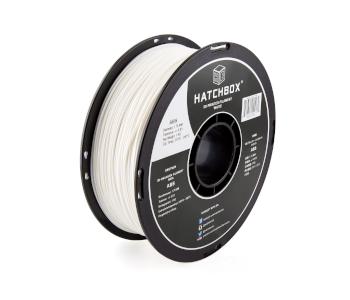
Acetonitrile Butadiene Styrene (ABS) is the most common example of a high-temperature filament and also one of the most infamous. The printing temperature of ABS lies somewhere in the range of 210 to 240 °C, the most optimal value of which depends on the specific brand.
ABS, along with PLA, is one of the two most popular filament materials used in 3D printing. It’s cheap and available practically anywhere. Prints made with ABS are very strong, chemically stable, and have excellent heat stability.
Post-processing is a unique strength of ABS because of its solubility with acetone. The acetone vapor bath technique is one of the best-known methods for achieving a consistently smooth finish with ABS prints.
However, ABS is also known to be a material that’s highly prone to warping and has poor bed adhesion. It also releases toxic fumes when heated, making printing with ABS a hazardous activity if done in a room with poor ventilation.
Nylon
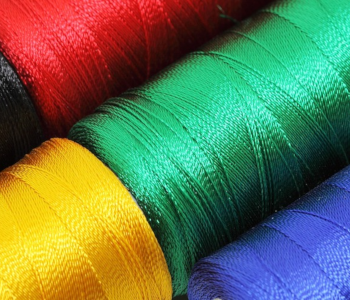
Nylon is deemed to be one of the most commercially valuable synthetic polymers because of its unique combination of strength and lightness. It can also be fashioned into various shapes because of its thermoplastic characteristic and can be customized through the addition of copolymers. Nylon is so strong that it has been used for parachutes and military equipment but can also be found in the fabric of common clothes.
Nylon prints at very high temperatures – somewhere in the range of 260 to 280 °C. As such, not all desktop-scale 3D printers are equipped to work with nylon. At this temperature, the usual PTFE idler used in standard extruder assemblies will quickly degrade. Thus, upgrading to an all-metal nozzle would be necessary.
As with other high-temperature filaments, nylon is highly prone to warping. It’s also an extremely hygroscopic material, even compared to other filaments used in 3D printing. This means that it absorbs moisture from the environment very quickly, which can be problematic during the printing process. If you’re planning on printing with nylon, you may have to invest in a dedicated filament dryer.
The same tendency to warping also means that nylon prints have poor dimensional accuracy. This doesn’t lend well to designs with highly intricate details. Distortion can be controlled through the use of a bed enclosure, but this cannot ensure that the issue will be entirely avoided.
Despite the challenges, nylon remains a fairly popular 3D printing filament material because of its unparalleled toughness. With an extremely high printing temperature, nylon emphasizes many of the usual issues encountered when printing at similar temperatures.
Amphora
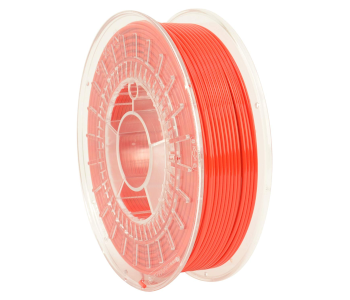
Amphora is probably the only custom polymer that has gained mainstream use in the casual 3D printing market. Developed by the Eastman Chemical Company in 2013, the goal of Amphora is to provide a 3D printing material that combines flexibility, impact resistance, and heat stability.
To put it succinctly, Amphora boasts of having the flexibility of TPU while having the heat stability and impact resistance of ABS. However, it does not pose the challenges of fume production and warping. This means that Amphora has better dimensional stability and is safe for food contact.
The optimal printing temperature of Amphora is somewhere in the range of 240 to 260 °C. This puts it a higher temperature range than ABS and may require upgrading of some 3D printer components. As usual, you will need a heated glass print bed.
The advantage of Amphora is that it’s a lot more resistant to warping compared to other high-temperature filaments. Based on the experience of several 3D printing professionals, it’s possible to print with Amphora even with no bed enclosure and with some cooling. This would not have been conceivable with ABS or nylon.
A 1-kilogram spool of Amphora filament costs about $60 – not exceptionally expensive, but easily twice the cost of a similar weight of ABS filament. Given the benefits, however, Amphora offers incredible value for money.
HIPS

High-Impact Polystyrene (HIPS) isn’t commonly used for creating 3D prints. Instead, its common use case is a support material, typically for ABS. With an optimal printing temperature between 230 to 240 °C, ABS can be printed with ABS without needing to make temperature changes in the middle of the process.
Support materials are needed for designs that have exceptionally large or heavy overhanging features. The support structures prevent these features from collapsing before they can cool down enough to develop sufficient strength. At the end of the printing process, the support structures can then be removed.
What makes HIPS such an excellent support material is the fact that it can be dissolved in limonene, a fairly common solvent. To remove support structures made from HIPS, a finished print only needs to be soaked in limonene for up to 24 hours.
Since HIPS prints at high temperatures, it’s still vulnerable to the usual warping issues. This means that it will still require a heated bed with an adhesion treatment and has to be printed with no cooling. HIPS also releases styrene gas when heated, so it’s best to print with HIPS in a well-ventilated room. If you’re using HIPS as support for ABS, ventilation will be an absolute necessity.
On its own, HIPS is strong, flexible, and has good impact resistance. Although it’s still chiefly used as a support material, the use of HIPS as a standalone 3D printing filament is slowly gaining acceptance.
Polypropylene filament

Despite polypropylene (PP) being one of the most popular plastics, it is not widely used in 3D printing. For reasons we shall see later, PP is one of the most difficult filament materials to work with.
PP prints at 210 to 230 °C – a range similar to ABS and not an exceptionally high-temperature range. As you would expect, PP requires the usual measures to address warping and poor bed adhesion. These include the use of a heated bed, adhesion aids, and a bed enclosure.
However, PP has an unusual warping behavior on account of its semi-crystalline structure. In contrast, other 3D printing materials like ABS are considered amorphous plastics. This means that PP tends to create semi-rigid crystals as it heats up instead of filling in the empty spaces. As a result, the warping of PP is a lot more difficult to control.
Another hurdle of PP is its low surface energy. This means that getting it to stick to the print bed is going to be very hard. When printing with PP, the selection of an appropriate and heat-stable adhesive is critical.
Despite the challenging nature of PP as a 3D printing material, many will agree that it’s also one of the most rewarding. PP is strong enough to withstand heavy and regular impact and has been regularly used for functional parts. It’s heat-stable enough to withstand sterilization by autoclaving and is chemically stable enough to be considered safe for food contact.
High-temperature PLA
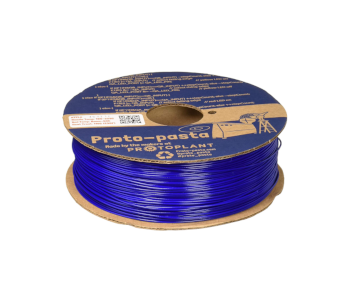
Regular PLA is not known for its heat stability. In fact, it’s downright unsuitable for applications that require exposure to temperatures above 80 °C. This is the most glaring performance gap of PLA, offsetting its many benefits.
To eliminate this drawback of PLA, some filament manufacturers have come up with a version of PLA that is more heat-stable. This is done through the addition of a nucleating agent which will act as the “starting point” for crystallization. This crystallization action provides thermal stability to this modified version of PLA.
The biggest advantage of high-temperature PLA is that it offers thermal stability without most of the other issues encountered with high-temperature PLA. It does not warp easily and does not present problems with bed adhesion. It’s even possible to print with high-temperature PLA without a heated bed or an enclosure.
The downside of printing with high-temperature PLA is that it requires an additional step – annealing. This step completes the crystallization process to allow the PLA to achieve its optimal physical properties. It only involves exposing the finished print to temperatures between 95 to 115 °C in an oven or a hot water bath, but it does add a significant length of time to the whole process.
High-temperature PLA is very rare and there are only a handful of brands that offer it. It’s also quite expensive – around two to three times the cost of regular PLA.
Pros and cons of 3D printing at high temperatures
PROS:
Better heat stability
The very essence of printing with high-temperature filaments is to come up with prints that can withstand extreme temperatures without deteriorating or deforming. This is suitable for projects that are designed for food contact or for outdoor use. Functional parts that will be used for applications where they will withstand constant friction are also well-suited for high-temperature 3D printing.
Mechanically superior properties
In most cases, plastics that have higher melting temperatures are also mechanically superior. This is expressed either in terms of higher strength, hardness, or impact resistance. For this reason, ABS or Nylon are some of the most preferred materials for 3D printing of functional parts and prototypes.
Generally safe for food contact
Just to be clear, this trait does NOT hold true for all the plastics in the list above. As a general rule, filaments with good thermal stability are also chemically stable. This means that they do not easily deteriorate when exposed to acids, bases, alcohols, and oils. This also means that they do not result in chemical compounds leaching into other substances.
Just about everyone has a food container made of PP in their homes or offices. Amphora filament, in particular, is a custom filament material that has been certified by the FDA as safe for food contact.
It bears mentioning that prints made via FDM technology inherently have uneven surfaces, and small indentations on their surfaces can promote bacterial growth. If you plan on using 3D printed objects for long-term food storage, make sure that they have been finished by sanding and polishing.
CONS:
Prone to warping
As soon as a molten filament exits the hot end nozzle, its exposure to the external environment results in rapid cooling. This rapid cooling naturally causes the plastic to contract. Over time, the thermal stress generated by this contraction overcomes the strength of the material, leading to warping.
The large temperate gradient caused by the high printing temperatures of these filaments makes them particularly prone to warping. Warping happens when the thermal stress accumulates, particularly at the corners, causing the base layer of the print to lift off the print bed. This greatly diminished the quality of the finished print.
The use of the heated bed is meant to reduce the effects of warping by reducing the distortion caused by thermal stress. Applying some adhesion to the bed also helps the print maintains its original dimensions. By using a bed enclosure, the whole build platform maintains a slightly elevated temperature to alleviate thermal stress.
There are a couple of ways to prevent warping, but the point remains – it’s going to take a combination of creative measures to get the best results out of high-temperature filaments.
Energy-intensive
By far, heating is the component that drives how much energy a 3D printing process consumes. When printing with high-temperature filaments, the temperature needed for the hot end nozzle and the bed has to be set at much higher values than usual. This greatly increases the energy costs for a 3D printing project.
This might not be a big deal if you only work on one or two projects per month and if you only do it for fun. However, for businesses that produce a high volume of 3D printed projects, the difference might be quite palpable.
May require high-end equipment
Not all desktop-scale 3D printers are equipped for high-temperature printing. You will need both a hot end and a bed that can reach the temperatures required by the filaments. Even the extruder assembly may need to be upgraded. The PEEK or PTFE idler element used in most conveyors can start deforming when exposed to temperatures above 240 °C.
Another crucial element in high-temperature printing is a bed enclosure. This helps reduce warping by maintaining an elevated temperature for the build platform. While some desktop FDM printers have built-in enclosures, others may have to be upgraded to make them appropriate for high-temperature 3D printing.
3D printing tips for high-temperature filaments
As you can tell by now, high-temperature filaments present a host of challenges even for those who are experienced with 3D printing. These tips will by no means eliminate all these challenges, but they are good starting points for the troubleshooting process.
Start at low temperatures and gradually increase
The most crucial parts of a 3D printing project are the first two or three layers. How well these layers stick to the print bed determine how the material will hold up to the thermal stresses that will inevitably be caused by cooling.
With this reasoning, it would help if you print the first few layers at the lower values of the recommended printing temperature range. This reduces the thermal stress that the material undergoes due to the effects of cooling and allows the filament material to develop strength faster. As the print proceeds, you can increase the temperature settings to enhance layer to layer adhesion.
Print slow for the first few layers
Along with a low printing temperature for the first few layers is the requirement to print slow. Not only does this give enough time for the filament to be exposed to the heating element, but it also slows down the accumulation of thermal stress in the material as it is laid down on the print bed.
It does not have to be extremely slow – a speed of 30mm/s is usually a good place to start. Again, this setting can be gradually increased to the maximum acceptable values after the third layer has been printed.
Print with a raft or brim
As a “last resort” strategy, you can simply add a raft or brim to your design if you still encounter warping problems despite your best efforts to apply adhesion aids. A brim extends the base layer of your design while a raft prints an entire “sacrificial” layer beneath your project.
In either case, the objective is to enhance bed adhesion by increasing the surface of the plastic that is bonded with the print bed. Keep in mind that you’ll need to remove all of this sacrificial material later on, which means added work for you and more chances of messing up a finished print. It’s also inherently a very wasteful strategy as you end up using much more filament than necessary.
Final thoughts
Printing with high-temperature filaments isn’t something that people usually do casually. It takes quite a bit of work, and you’ll probably mess up a few prints before you get one that you’re satisfied with.
In most cases, though, the reward is well worth the effort. High-temperature filaments create prints that are exceptionally strong, stable, and able to stand up to extreme conditions. Some of them are easier than others – if you’re having trouble with Nylon, then try and hone your skills with ABS first. By going back to the scientific fundamentals of 3D printing, mastering how to use any of these filaments is not impossible.

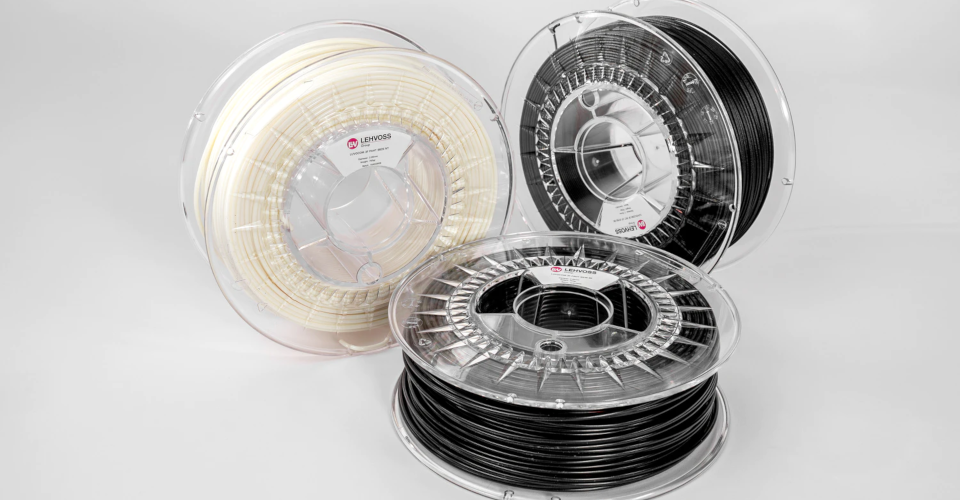




This is a very nice article and has all the information about 3d printing. All the points are very well explained with the help of images. Keep sharing more information on such topics.
Where is the comparison table of high temp plastics with factual data???
#BEUSEFUL